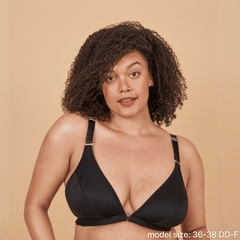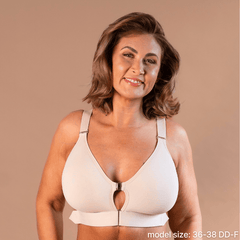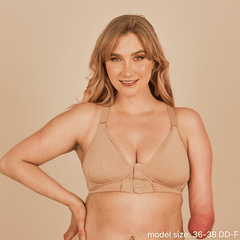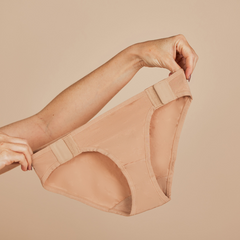
Wearing a properly fitting bra is essential for both comfort and support. However, it’s difficult for women to find the perfect fit.
Every bra brand has a different size guide and measuring system, and women's bra size can change over time for a variety of reasons, including weight gain or loss, pregnancy, breastfeeding, and aging. As a result, most women are wearing the wrong size bra.
Here are some tips to understand whether you’re wearing the right fitting bra.
Tip 1: Use your measurements when shopping, not your “size”
Unlike in men’s pants, there is no standard sizing for women’s bras. There is no universally accepted measurement for what is a “34C,” so each brand is left to their own devices. This results in a lack of consistency across brands and even within the company itself at times, depending on the product and their level of quality control.
As such, the best solution is for women to get measured before beginning the bra shopping journey and to use those measurements and a brand’s size guide to decide on what size to buy. This is especially important when shopping online.
The main two measurements used are the band and the underband, although more advanced fit calculators may also ask additional questions.
Tip 2: Measure the band without rounding up or down
The band size is the measurement around the rib cage, just under the bust (i.e. breasts). It’s important to use a soft measuring tape and breathe out so that the band will fit nice and snug. Measuring in centimeters and then converting it to inches, if in the US, will give the best result.
It’s also crucial to write down the exact measurement rather than rounding up or down. Depending on the brand, a decimal point will change the size you are. For example, if you measure 33.5”, it may be the difference between being a 34 band or a 36 band in a brand’s size chart.
A properly fitting bra should have a band that is snug but not too tight. It should not ride up your back when you have the bra on, and it should not cause pain or limit your ability to breathe.
If the band size is too big, the bra will not provide the necessary support and your breasts might pop out from the bottom.
Tip 3: Measure the cup at the fullest point, bend over if necessary
The cup size is the measurement around the fullest part of the bust (i.e. breast). If your breasts are on the droopier side, one way to measure them accurately is to bend at the hips if you can. Once you’re at a 90* angle, you can measure around the fullest part. Ideally, this is done without a bra on as any padding may interfere with the measurements.
Well fitting cups are those that keep the breast in without any spillage or gaping, meaning the breasts and neither overflowing from the cups nor is there a gap between the bra and the breast.
Tip 4: Breast shape matters in picking a bra style
Different styles of bras will fit differently depending on the breast shape, so it's important to try on a variety of styles to find the one that works best for you.
For example, wide set breasts, meaning there’s space between the two, and round breasts do well with a plunge bra.
Tip 5: Adjust the shoulder straps until the breasts are lifted
The straps should be adjusted so that the cups are fully containing the breasts without any spillage or gaping, assuming you have the right cup.
They shouldn’t, however, be digging painfully into your shoulder. That is usually a sign that the strap is too thin to distribute the weight properly.
Tip 6: Bodies are constantly changing, so if there’s been a change, it may be time to get sized again
Weight gain or loss is one of the most common reasons for changes in bra size. As weight fluctuates, the size of the breasts can also change since a large part of the tissue is fat.
Pregnancy and breastfeeding can also have a significant impact on bra size as the breasts increase in size to produce milk.
Another factor that can affect bra size is aging. Bodies naturally change with age, and older women might find that what they consider comfortable and well fitting is changing too. The breasts can lose elasticity and the body may develop some aches and pains in the shoulders or hands that make it more challenging to put on a traditional bra.
In these instances, an adaptive bra that’s easy to put on and comfortable might be the best solution. For more information on what to look for in a bra as a mature woman, you can read our article The Best Bras For Mature Women.



